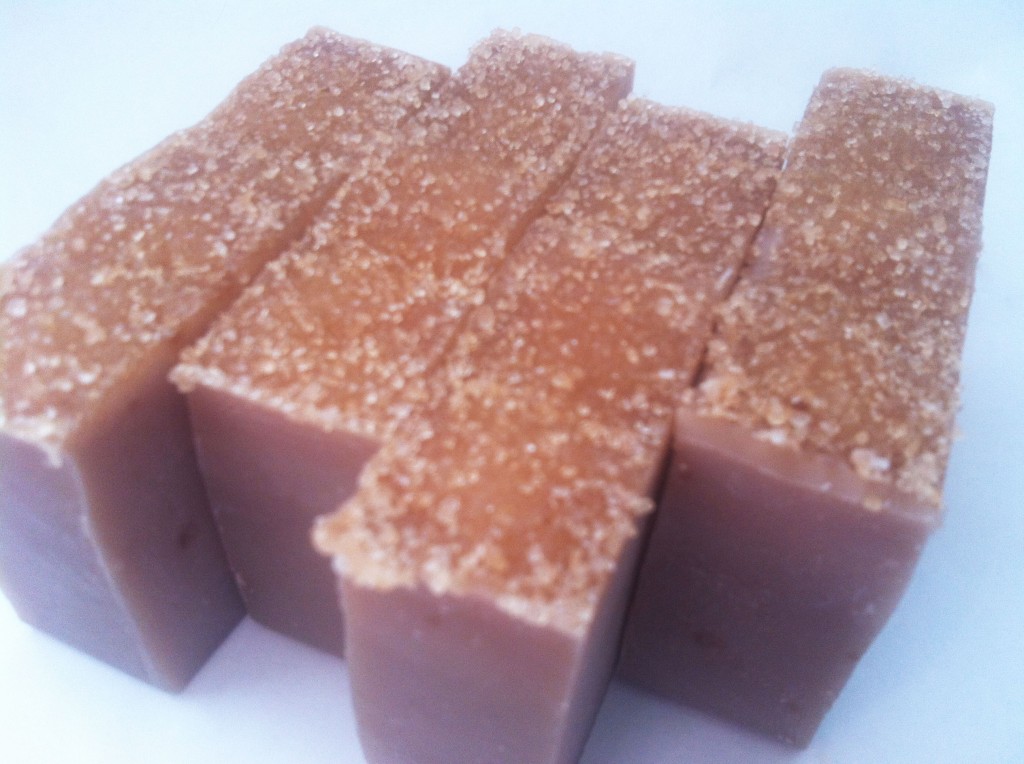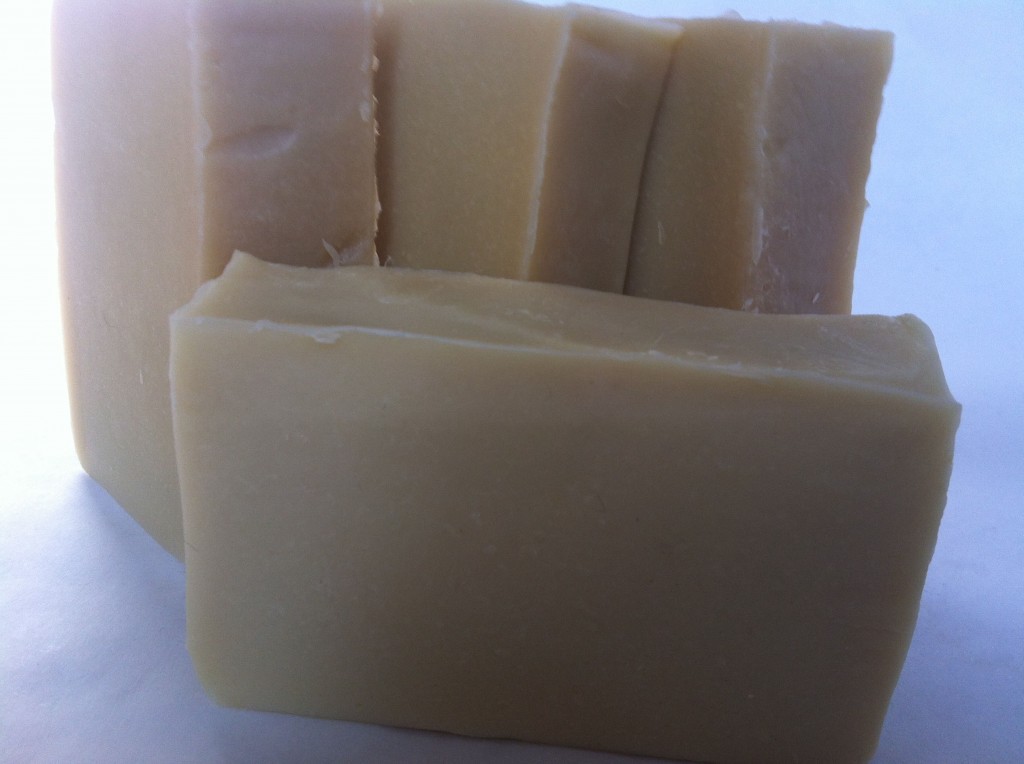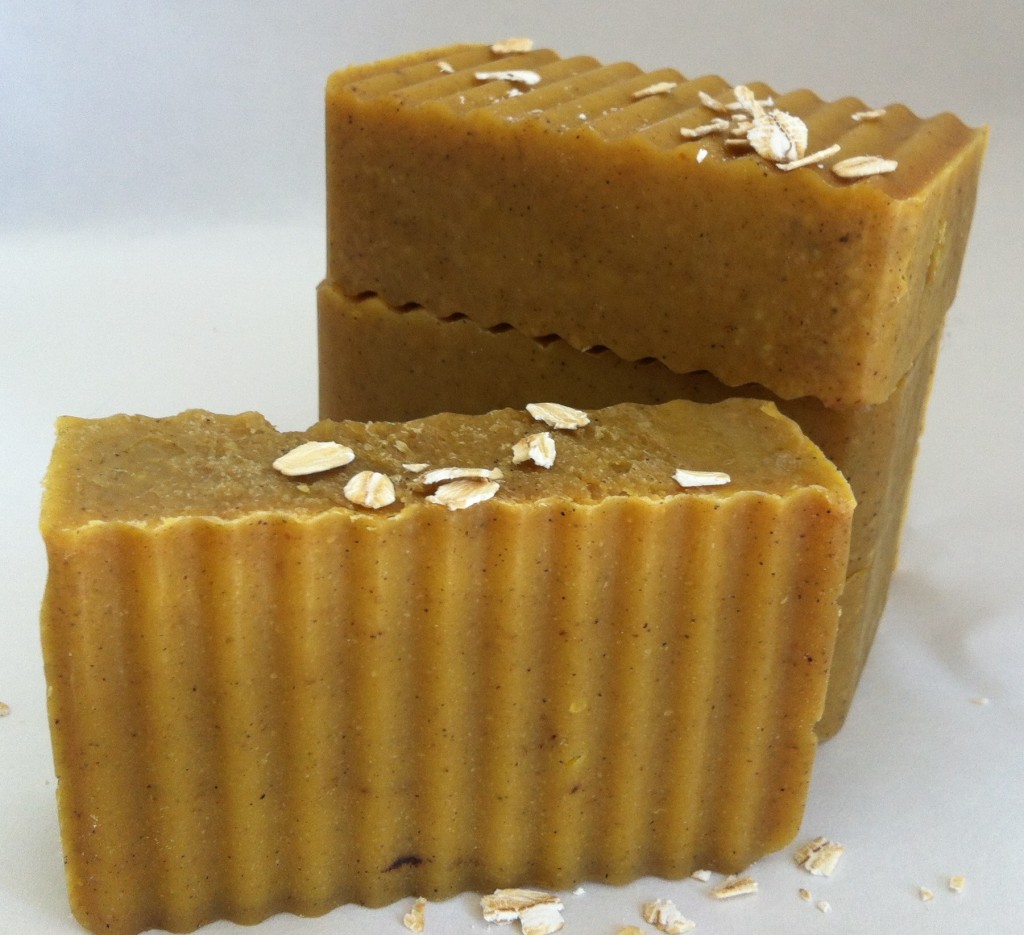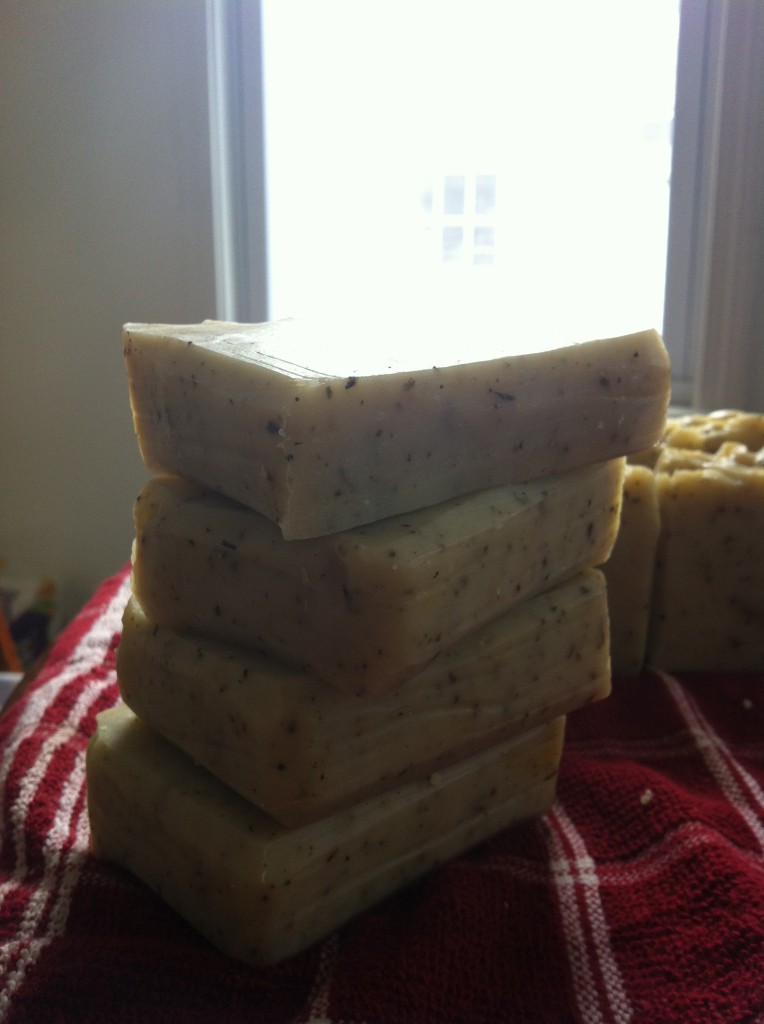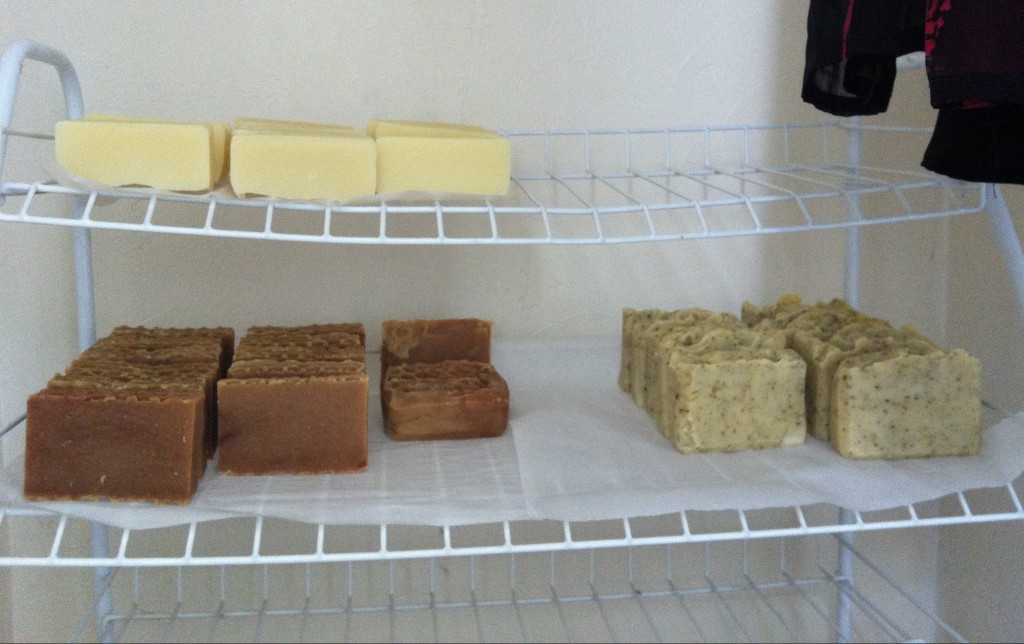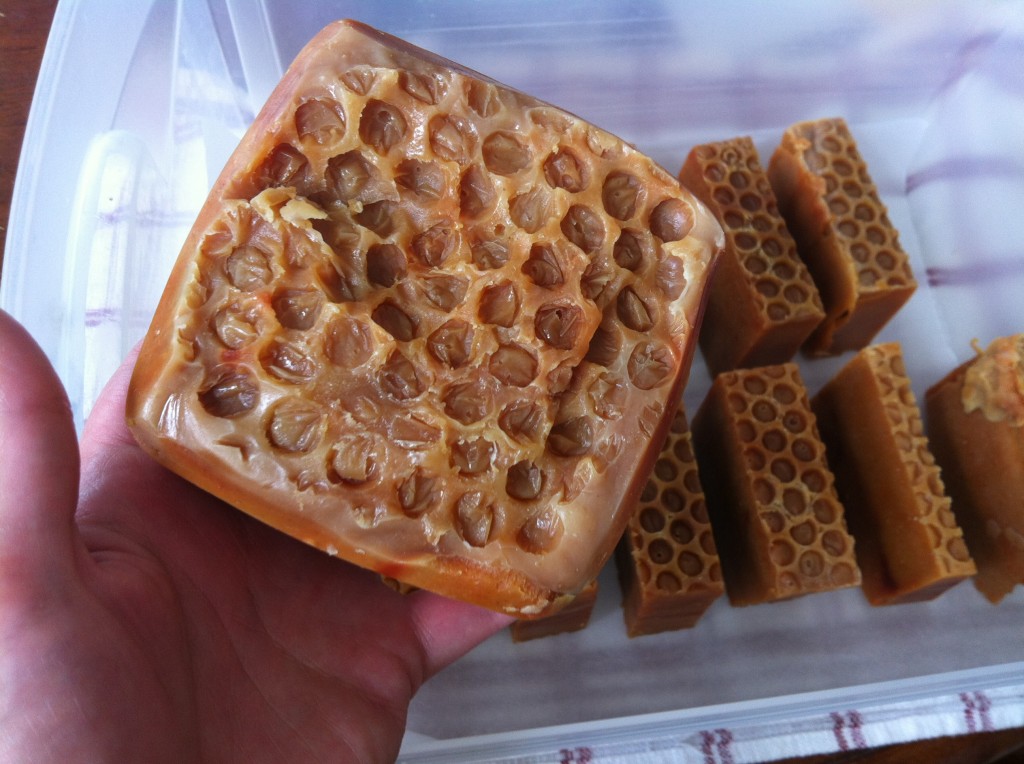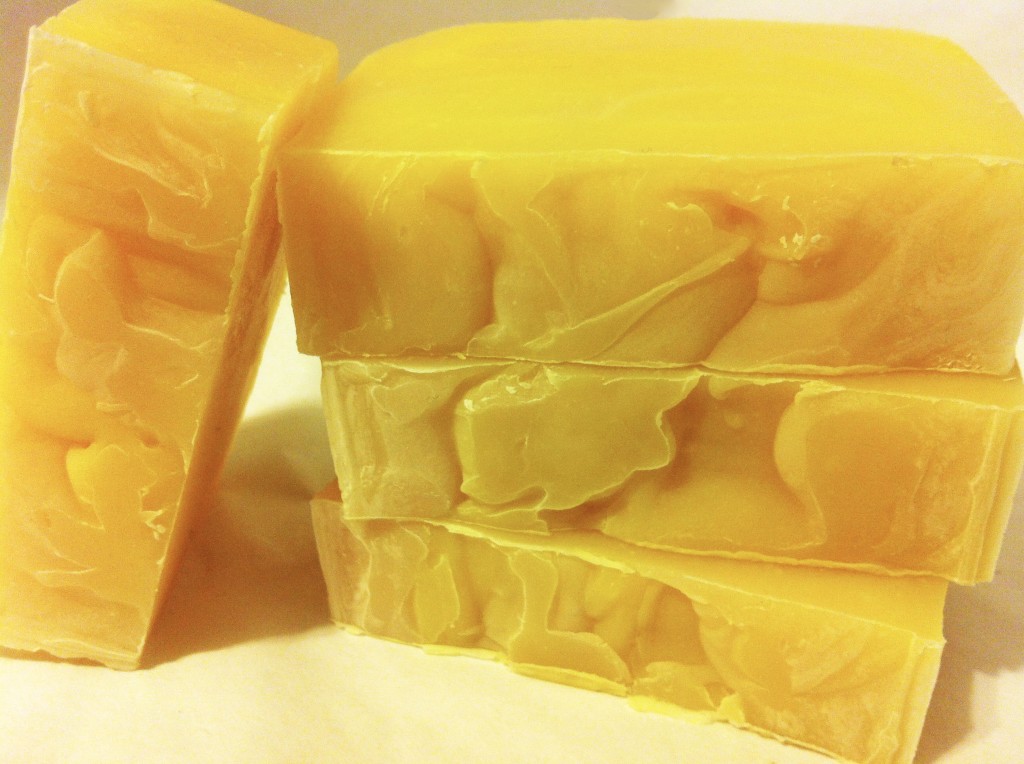 I cut the Sweet Jane soap this afternoon. The swirls are not terribly defined, which I expected. The yellow really pops after the soap has saponified. It’s lovely and smells great.
I cut the Sweet Jane soap this afternoon. The swirls are not terribly defined, which I expected. The yellow really pops after the soap has saponified. It’s lovely and smells great.
Tag: castor oil
Sweet Jane
I have been watching Celine Blacow’s instructional videos, and I can’t think of anyone else I’ve seen who is half as good at explaining how to swirl. She does many different swirling techniques, including the hanger swirl, which I’m dying to try—unfortunately, I don’t have any hangers. Well, that’s not true. I have a bunch of plastic ones I can’t bend. A co-worker said he’d donate a bunch to me. I’m looking forward to trying it out.
Here is Celine’s tutorial:
I ordered a few new colorants from Bramble Berry and did a successful in-the-pot swirl with three colors (Fizzy Lemonade, Ultramarine Violet Oxide, and Hydrated Chrome Green pigments) in a shampoo bar recipe with tea tree oil. Those bars are still very soft, but I’ll post a picture soon.
After trying it once, I decided to do another, but I wasn’t sure what I wanted to do. I realized I still had some Lemon Verbena fragrance oil from Bramble Berry, so I decided to do a coconut-milk based soap using the Fizzy Lemonade pigment and Lemon Verbena fragrance. I’m calling it Sweet Jane after Jane Bennet in Pride and Prejudice. Jane Austen’s classic novel celebrates its 200th anniversary on January 28, 2013! Anna Quindlen once describe Jane Bennet as “sugar to Elizabeth’s lemonade.” She always looks for the best in everyone. Here she is as portrayed by Rosamund Pike in the 2005 version of the film (she’s the blond).

Jane refrains from judgment. She’s quiet and serene. Lemon Verbena is a perfect complement to her sweetness of character. I imagine she smells exactly like Lemon Verbena. And the yellow not only complements the soap fragrance, but also alludes to Jane’s hair color, believed to be blonde. Jane wrote in a letter to her sister Cassandra:
Henry & I went to the Exhibition in Spring Gardens. It is not thought a good collection, but I was very well pleased—particularly (pray tell Fanny) with a small portrait of Mrs. Bingley, excessively like her. I went in hopes of seeing one of her Sister, but there was no Mrs. Darcy;—perhaps however, I may find her in the Great Exhibition which we shall go to, if we have time;—I have no chance of her in the collection of Sir Joshua Reynolds’s Paintings which is now shewing in Pall Mall, & which we are also to visit.—Mrs. Bingley’s is exactly herself, size, shaped face, features & sweetness; there never was a greater likeness. She is dressed in a white gown, with green ornaments, which convinces me of what I had always supposed, that green was a favourite colour with her. I dare say Mrs. D. will be in Yellow.
Martha Rainbolt argues in a 1988 English Language article entitled “The Likeness of Austen’s Jane Bennet: Huet-Villiers’ ‘Portrait of Mrs. Q” that this image may be the one Jane Austen saw:
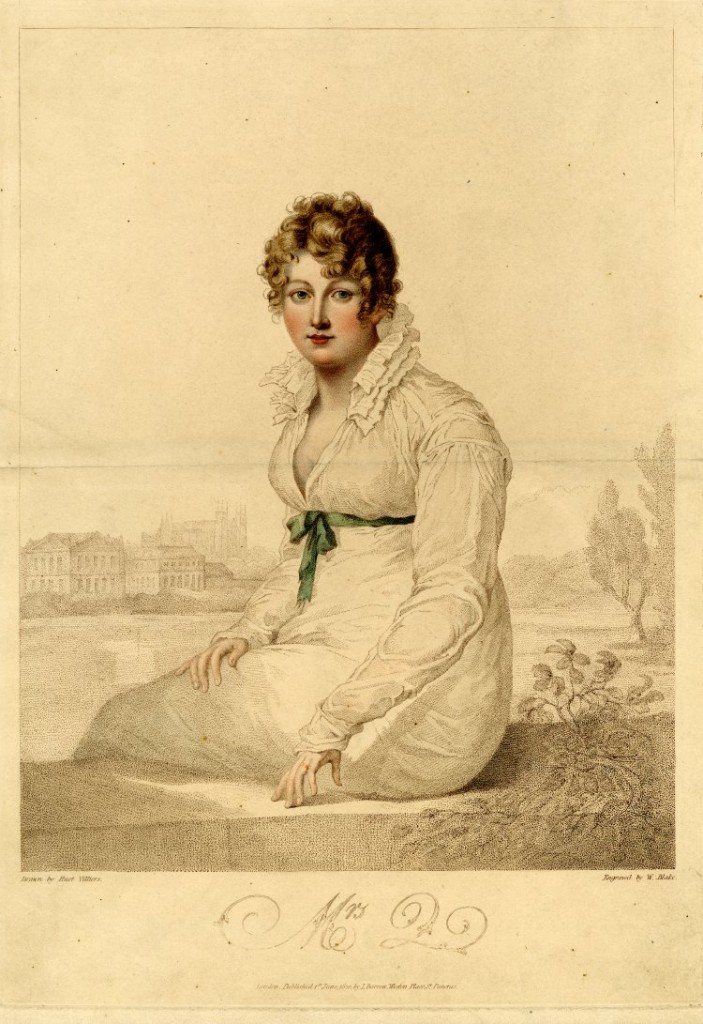 Seems logical to me based on the evidence I’ve seen. She’s a very sweet-faced lady.
Seems logical to me based on the evidence I’ve seen. She’s a very sweet-faced lady.
Doesn’t she look like she’d wear Lemon Verbena?
I’m not sure what I’m going to get with this soap. My experience with the Fizzy Lemonade colorant is that it doesn’t look like it has changed color at all when you add it to the soap batter, but after it has saponified, it is a very pretty yellow. Right now, it just looks yellow. Who knows what will happen when I cut it? I’ll post the cutting pictures tomorrow.
For the interested, here is the recipe:
- 30% olive oil
- 25% coconut oil
- 25% palm oil
- 10% sweet almond oil
- 5% cocoa butter
- 5% castor oil
By the way, in case you were wondering, yes, I will be making a soap for each of the major characters in Pride and Prejudice this year.
Swirling Success
I’ve been trying for some time to swirl two colors together with no success, but I finally did it!
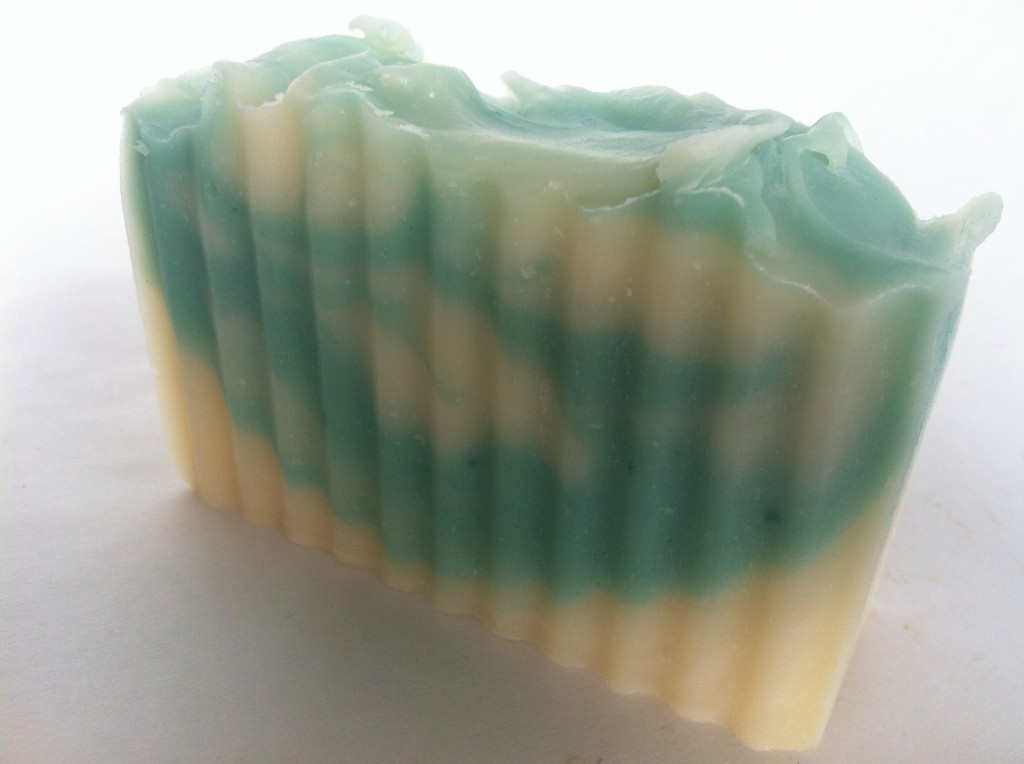 I created this soap because I didn’t have enough lemongrass essential oil to make a second batch of Lemongrass Sage today. Lemongrass Sage has turned out to be my most popular soap. I sold out of the supply I brought to a recent craft fair at my school, and I have sold several bars of it over this Thanksgiving weekend. I have to admit, it’s a great soap, and I use it myself on my face.
I created this soap because I didn’t have enough lemongrass essential oil to make a second batch of Lemongrass Sage today. Lemongrass Sage has turned out to be my most popular soap. I sold out of the supply I brought to a recent craft fair at my school, and I have sold several bars of it over this Thanksgiving weekend. I have to admit, it’s a great soap, and I use it myself on my face.
At a loss as to what type of soap to make, I decided to try something new. I had a coconut lime verbena scent I had been meaning to try, and I had some green colorant left over from making the Cucumber Yogurt batch (as it turns out, I needed to use a lot more colorant to make the soap look greenish), so I decided to try swirling again.
Ingredients:
- 30% olive oil
- 25% coconut oil
- 25% palm oil
- 10% avocado oil
- 5% cocoa butter
- 5% castor oil
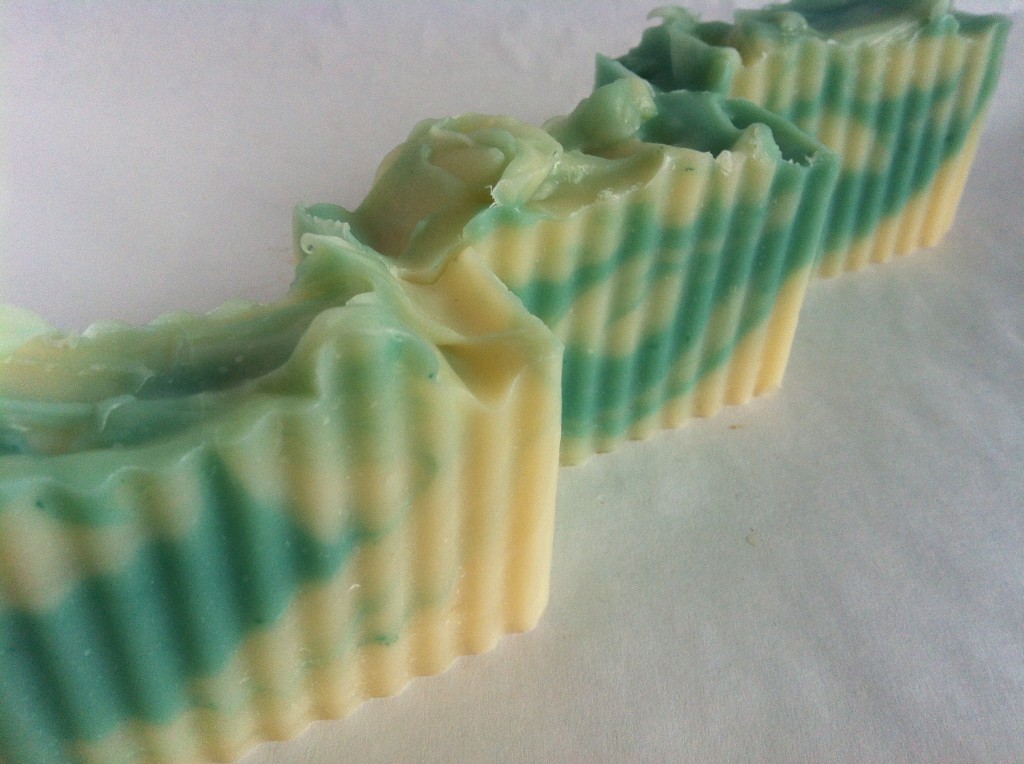 I started to use yogurt as a base when it occurred to me I should try coconut milk instead because of the coconut lime verbena scent. I knew I wanted the white part of the soap to be as white as possible without using titanium dioxide (I don’t have any). My shea butter is raw, unrefined shea butter, and it has a yellow cast that makes my white soaps a more yellow shade of cream. The cocoa butter I have is white, and I noticed when I used it to make the Vanilla Sugar Cane soap that the soap batter was much whiter than normal, though because of the vanillin in the fragrance I used, the soap later turned a browner color. So, I decided to use cocoa butter in this recipe when I usually use shea. On a whim, I also decided on avocado oil instead of sweet almond or a full 40% olive oil. No particular reason aside from wanting to experiment. Avocado oil is good for people with sensitive skin, and it has vitamins A, D, and E.
I started to use yogurt as a base when it occurred to me I should try coconut milk instead because of the coconut lime verbena scent. I knew I wanted the white part of the soap to be as white as possible without using titanium dioxide (I don’t have any). My shea butter is raw, unrefined shea butter, and it has a yellow cast that makes my white soaps a more yellow shade of cream. The cocoa butter I have is white, and I noticed when I used it to make the Vanilla Sugar Cane soap that the soap batter was much whiter than normal, though because of the vanillin in the fragrance I used, the soap later turned a browner color. So, I decided to use cocoa butter in this recipe when I usually use shea. On a whim, I also decided on avocado oil instead of sweet almond or a full 40% olive oil. No particular reason aside from wanting to experiment. Avocado oil is good for people with sensitive skin, and it has vitamins A, D, and E.
I mixed the oils with the coconut milk and lye, added the fragrance, and divided the batch in half. I colored one half. By the time I had the colored portion ready, the white portion had already reached the consistency of very thick pudding, or perhaps mashed potatoes like I make them (whipped potatoes, really). I started to lament a little bit, thinking of my Amy Lowell Lilac Soap, when I remembered a swirling technique I learned on YouTube:
The swirling technique Celine described saved my soap! I think it turned out gorgeous. It smells heavenly. I can’t wait to try it with another kind of soap. One of the interesting things about swirling is that each time the soap is different. Each individual bar is different. You just don’t know what you will get. I’m very pleased with how the soap turned out.
 The soap is beautiful, and I love the coconut lime scent. I’m also proud of the way the soap itself turned out with the coconut milk base. I admit I was excited about the idea when I remembered I had some frozen coconut milk I could use.
The soap is beautiful, and I love the coconut lime scent. I’m also proud of the way the soap itself turned out with the coconut milk base. I admit I was excited about the idea when I remembered I had some frozen coconut milk I could use.
Coconut Lime Verbena by Dana Huff is licensed under a Creative Commons Attribution-NonCommercial 3.0 Unported License.
Permissions beyond the scope of this license may be available at Suds Life: About.
Vanilla Sugar Cane Soap
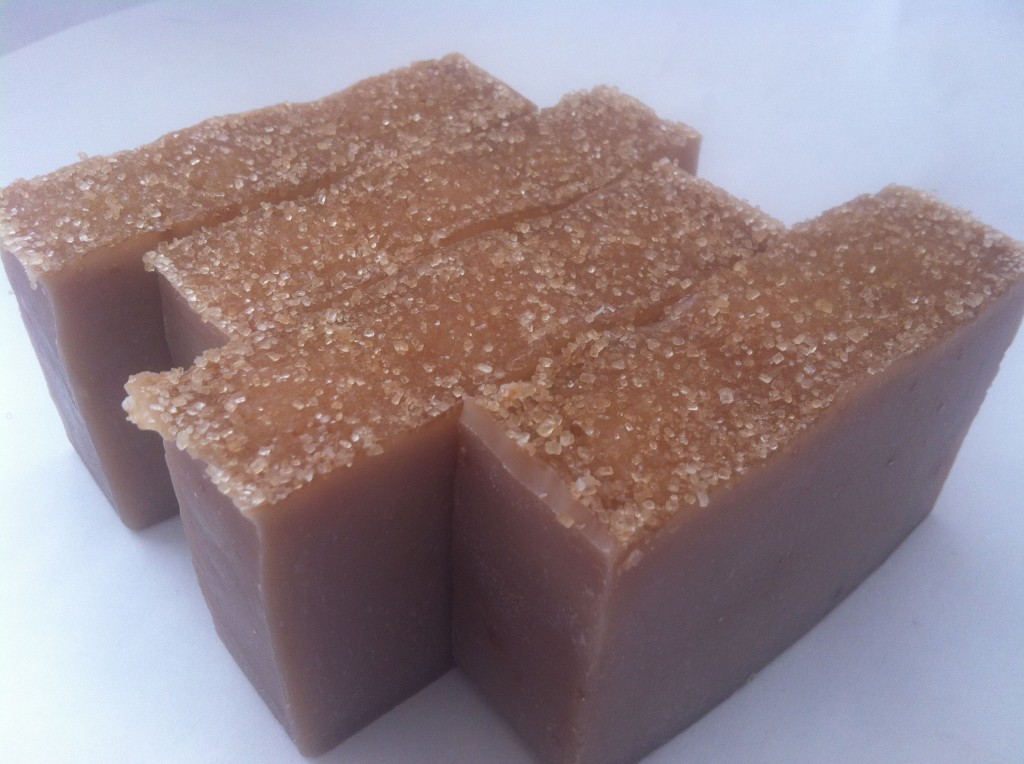 Inspired by Attica Locke’s new novel The Cutting Season, I created a new soap using some ingredients I had been wanting to try for some time.
Inspired by Attica Locke’s new novel The Cutting Season, I created a new soap using some ingredients I had been wanting to try for some time.
Ingredients
- 30% olive oil
- 25% coconut oil
- 25% palm oil
- 10% sweet almond oil
- 5% cocoa butter
- 5% castor oil
I had never soaped with sweet almond oil and castor oil, and I was really pleased with the consistency of the soap. I used Nature’s Garden’s Warm Vanilla & Sugar fragrance oil. It smells exactly like Bath & Body Works’s Warm Vanilla Sugar fragrance, which happens to be one of my favorites. I layered the top of the soap with raw sugar.
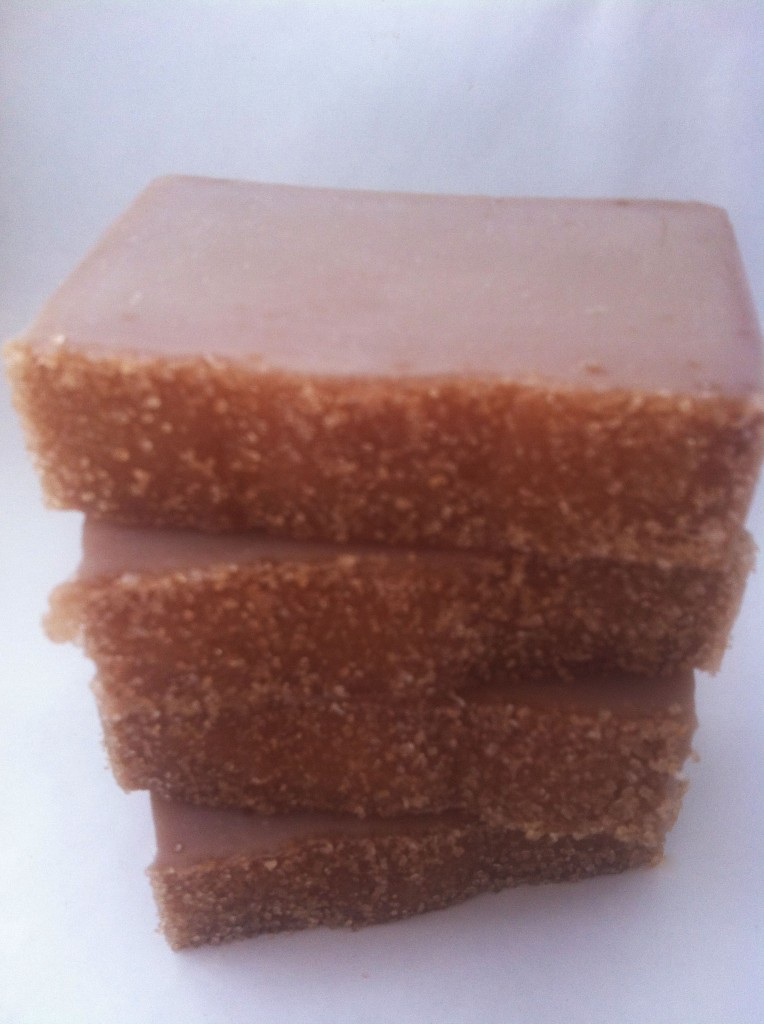 Because the fragrance oil has vanilla in it, it has discolored the soap, which I expected and did not mind. I am not sure if it will continue to darken as it cures, but I’m not worried. Even if it darkens more, I think it will still be a beautiful soap.
Because the fragrance oil has vanilla in it, it has discolored the soap, which I expected and did not mind. I am not sure if it will continue to darken as it cures, but I’m not worried. Even if it darkens more, I think it will still be a beautiful soap.
It should be ready to sell in the Etsy store by the last week of November. It smells great. I cannot wait until it’s ready to use.
Cucumber Yogurt Soap
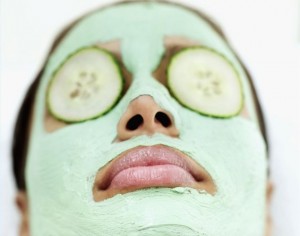 I’ve been wanting to make a cucumber yogurt bar for a long time. Heidi Corley Barto has a recipe for a soap using a cucumber purée in her book The Natural Soap Chef, and after reading about the testers’ reaction to Anne L. Watson’s Yogurt Parfait soap in Milk Soapmaking, I decided I should try to combine the two. A quick Google search told me I was not the first person to have this idea. After all, it makes sense. Don’t spas give cucumber/yogurt facials, after all? If those two ingredients weren’t wonderful for your face, then the spas wouldn’t be charging the big bucks for facial treatments.
I’ve been wanting to make a cucumber yogurt bar for a long time. Heidi Corley Barto has a recipe for a soap using a cucumber purée in her book The Natural Soap Chef, and after reading about the testers’ reaction to Anne L. Watson’s Yogurt Parfait soap in Milk Soapmaking, I decided I should try to combine the two. A quick Google search told me I was not the first person to have this idea. After all, it makes sense. Don’t spas give cucumber/yogurt facials, after all? If those two ingredients weren’t wonderful for your face, then the spas wouldn’t be charging the big bucks for facial treatments.
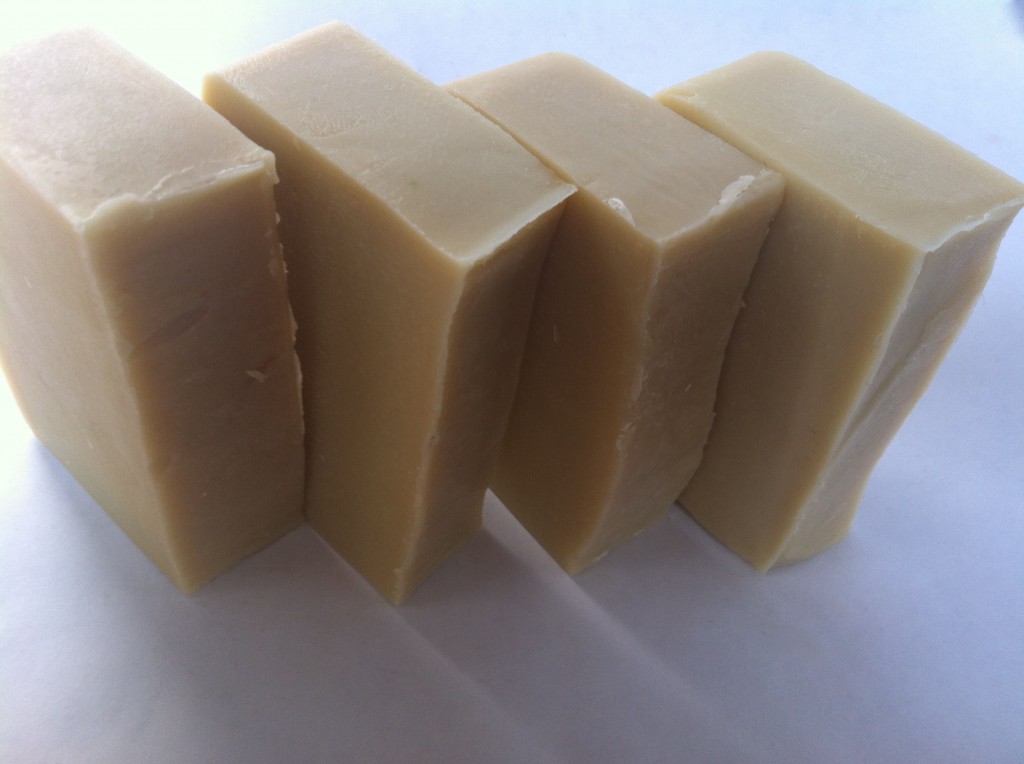 Recipe
Recipe
- 250 g coconut oil
- 225 g palm oil
- 120 g shea butter
- 275 g olive oil
- 200 g avocado oil
- 55 g castor oil
155 g lye
186 g cucumber-water purée
187 g plain whole milk yogurt
The Process
First I peeled two small cucumbers and shaved off the seeds with my peeler as well. Barto suggested using English cucumbers because they have fewer seeds, but I either couldn’t find them, or my store didn’t have them, so I just opted for some small pickling cucumbers. I imagine you could just use one big cucumber, but since it was the first time I made this soap, I wanted to go with smaller cucumbers in case one was enough. After I peeled and deseeded the cucumbers, however, I decided two was probably more like it. I added distilled water to the cucumbers and puréed them in my blender. Barto also suggested not peeling the cucumbers so that the peel added pigment, but I wasn’t too sure about that, so I peeled them.
I mixed half cucumber-water purée with half yogurt and froze the mixture in an ice cube tray. When I was ready to make the soap, I mixed the lye with the frozen cucumber-yogurt cubes and melted my shea butter, coconut oil, and palm oil in a large bowl. Then I added olive oil, avocado oil, and castor oil to the melted hard oils. Once the cucumber-yogurt and lye mixture was 90°, I added it to the oils and stick blended it to a light trace. Then I added a tiny bit of green pigment that didn’t really wind up coming through in the soap, and a very nice cucumber melon fragrance oil from Nature’s Garden, a new favorite vendor that has reasonable prices and a wide variety of products.
Cucumber Yogurt Soap by Dana Huff is licensed under a Creative Commons Attribution-NonCommercial 3.0 Unported License.
Permissions beyond the scope of this license may be available at Suds Life: About.
Facial Mask Image via eHow
Fun New Soaps
I’ve been trying some fun things with purées, ideas I learned about in Heidi Corley Barto’s The Natural Soap Chef. The first soap is a banana/coconut milk purée-based soap scented with Bramble Berry’s Monkey Love fragrance oil, a recipe you can find in Barto’s book. She calls it Bananas Foster, but I like Funky Monkey better.
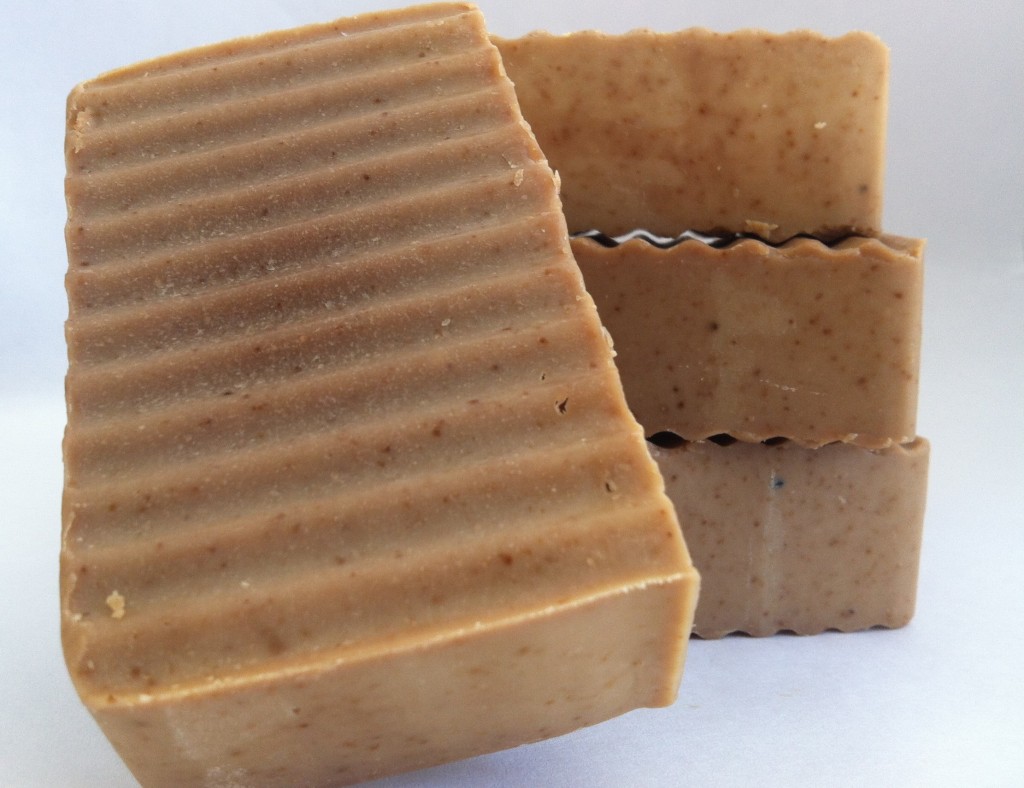 You can see little flecks of banana in the soap. It has a sort of interesting, uneven color that might be the result of a partial gel, but it doesn’t look as dramatic as some of the partial gel images I’ve seen of other soap, so I’m not sure. I decided to try to prevent this soap from gelling and put it in the fridge because my previous milk soaps had not turned out well, and this one seemed to be kind of cranky as I was mixing the lye. I like the way it turned out. It smells great, and I think it is going to be a very nice soap to use.
You can see little flecks of banana in the soap. It has a sort of interesting, uneven color that might be the result of a partial gel, but it doesn’t look as dramatic as some of the partial gel images I’ve seen of other soap, so I’m not sure. I decided to try to prevent this soap from gelling and put it in the fridge because my previous milk soaps had not turned out well, and this one seemed to be kind of cranky as I was mixing the lye. I like the way it turned out. It smells great, and I think it is going to be a very nice soap to use.
This next soap has an interesting story. Pumpkin pie soap was one of the first soap ideas I ran across that I told myself I HAD to make, and I believe I first encountered it on the Lovin Soap Blog, but it’s a hot process recipe, and I prefer cold process. However, the Soap Queen also has a great CP pumpkin purée soap tutorial. Heidi Corley Barto also has one in The Natural Soap Chef.
Meet my Pumpkin Pie Soap! I didn’t come up with the idea, but I used my own recipe and technique for producing it.
Ingredients
- 35% olive oil
- 25% coconut oil
- 25% coconut oil
- 10% shea butter
- 5% castor oil
I share the percents because I think it’s easier to make the recipe for your own mold if you know percents. You would then just use a lye calculator to figure out how much lye, water, and pumpkin purée to use.
In my soap, I used One Pie Pumpkin.
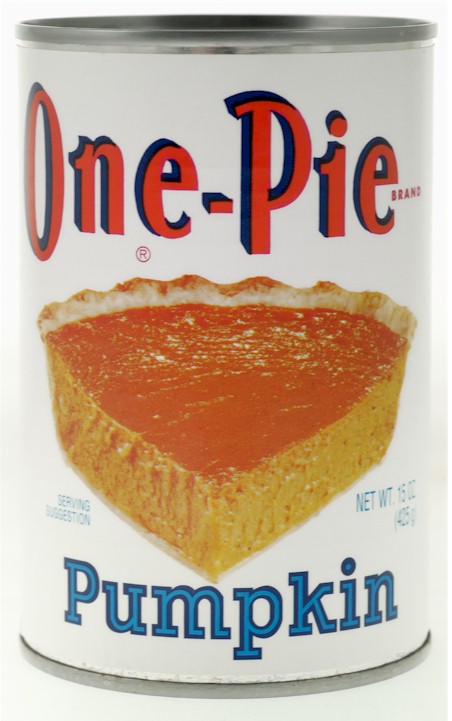 One Pie Pumpkin is very special pumpkin. Yankee Magazine calls it New England’s unofficial brand. It isn’t available widely outside of New England, and some of my research indicates that some areas only sell it seasonally during fall and winter for Thanksgiving and Christmas. I haven’t lived in Worcester, MA long enough to find out if that is the case here, too, but I intend to find out. If it is, this could be one very special soap. I really like that the recipe uses an old New England product that been used for generations. It makes the soap more interesting to me. I halved the amount of water called for by the recipe and mixed my lye with water, then I made up the remaining amount of water with One Pie Pumpkin. My recipe called for 5.61 oz. lye and 13.18 oz. water, so I used 6.59 oz. water and 6.59 oz. pumpkin purée. I added the pumpkin directly to the oils and stick blended the mixture to combine, then I added the lye/water and stick blended to a light trace. It blended fairly quickly.
One Pie Pumpkin is very special pumpkin. Yankee Magazine calls it New England’s unofficial brand. It isn’t available widely outside of New England, and some of my research indicates that some areas only sell it seasonally during fall and winter for Thanksgiving and Christmas. I haven’t lived in Worcester, MA long enough to find out if that is the case here, too, but I intend to find out. If it is, this could be one very special soap. I really like that the recipe uses an old New England product that been used for generations. It makes the soap more interesting to me. I halved the amount of water called for by the recipe and mixed my lye with water, then I made up the remaining amount of water with One Pie Pumpkin. My recipe called for 5.61 oz. lye and 13.18 oz. water, so I used 6.59 oz. water and 6.59 oz. pumpkin purée. I added the pumpkin directly to the oils and stick blended the mixture to combine, then I added the lye/water and stick blended to a light trace. It blended fairly quickly.
I used Bramble Berry’s Pumpkin Pie fragrance oil for scent. It smells great. I did notice that it accelerated trace in my own soap, so add it at a fairly light trace. I actually didn’t need to stick blend anymore after I added it. Next time I make it, I might add my pumpkin pie spice to the soap and stick blend it before I add the fragrance oil just so the spice is incorporated fully. I had not intended to gel the soap, but it was gelling in the fridge anyway, and it was starting to develop a crack, which I fixed. Since I figured it would gel anyway, I took it out to prevent a partial gel. I don’t have anything to compare it to, since I haven’t made this soap before, but I think gelling it gave it a really nice, rich pumpkin color. The soap looks great and smells amazing. I love many of the soaps I’ve made, but I think this one might be my favorite, just because it smells so great and was so much fun to make, and it also has this interesting New England connection. I can’t wait to use it.
The Great Chocolate Milk Soap Experiment
The chai tea fragrance oil I ordered to make my chai tea soap this weekend didn’t arrive in time.
Boo!
But when life gives you lemons, you make lemonade, right? I could still make soap with things I had on hand or that I could easily pick up at the grocery store. I can’t find a place around here that sells essential oils or fragrance oils, so it had to be something that would be OK without added scent.
I decided that this weekend could be the weekend I experiment with using milk in soap, and I created a chocolate milk soap recipe I really wanted to try.
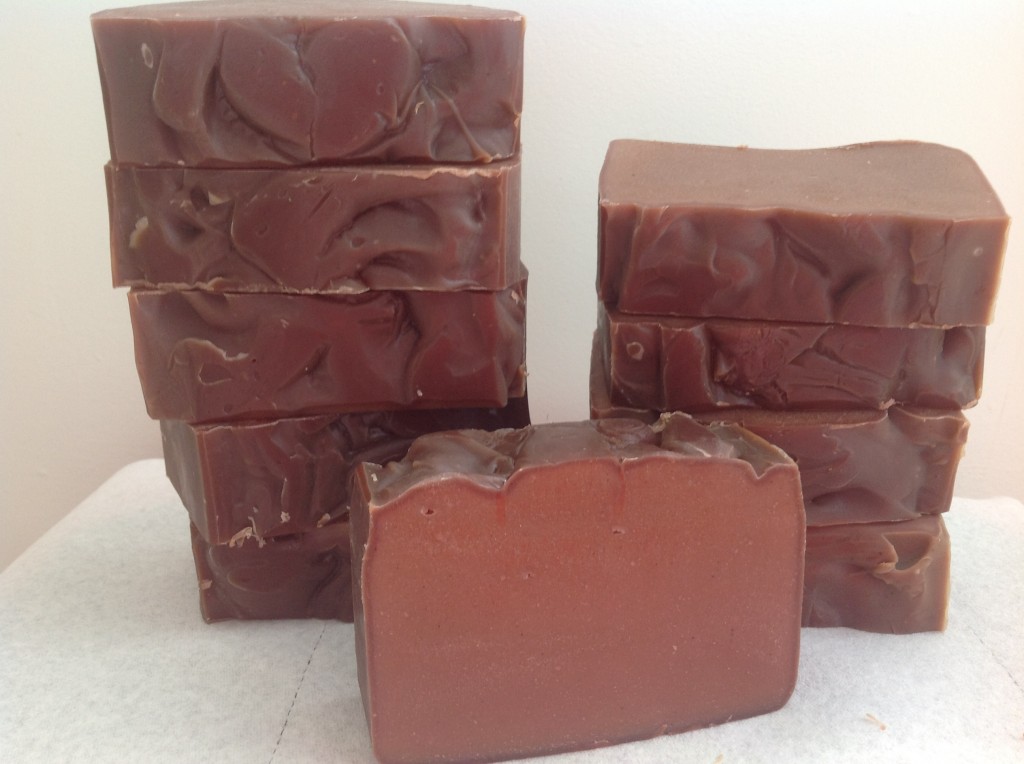 Working with both milk and chocolate can be more difficult, however, so I had to change some things about my process.
Working with both milk and chocolate can be more difficult, however, so I had to change some things about my process.
Ingredients
- 13.2 oz. olive oil
- 12 oz. coconut oil
- 6.8 oz. palm oil
- 4 oz. shea butter
- 0.625 oz. unsweetened baking chocolate
- 13.2 oz. whole milk
- 5.637 oz. lye
First, I measured out the whole milk, put it in a freezer bag, and froze it. This is a suggestion for working with milk (although she mentions it with goat milk) from Heidi Corley Barto’s in The Natural Soap Chef. When you use liquids other than water, it’s a good idea to follow suggestions of more experienced soapers like Heidi, and she’s not the only person I’ve seen mention working with frozen milk. The milk should be at least a frozen slush when you use it. Make an ice bath in your sink, and put the slushy milk into the ice bath. Then carefully, slowly add the lye, stirring as you go. Add a bit, stir a bit. Go very slowly. If the temperature of the lye mixture starts to climb above 140°, add more ice to the ice bath.
Prepare the chocolate with the oils. It should be melted. You can melt it in the microwave if you’re careful. Check this link for tips on melting chocolate. When the lye/milk has reached 100°, add it to the oil mixture. The rest of the process as the same as making any other cold process soap: use a stick blender to help the soap saponify, and once it reaches trace, pour it into the mold of your choice. My recipe fits a three-pound loaf mold.
I knew working with milk would be different, but as it turned out, the main difference seemed to be the amount of time for each step. I think I put too much ice in the ice water bath, and my lye heated up, but then cooled down to about 80° and stalled there, so I put it in a warm bath. Well, a hot one. And I managed to bring it up to 98°, but it wouldn’t budge any more, so I decided maybe I should add it to the oils. It look longer than usual to reach trace. The soap didn’t feel as warm as it normally does when I picked up the mold to put it in the closet where I keep my soap. It seemed to take longer to reach a gel stage, too. I’m not sure if this is just normal for working with milk, or if it was due to the fact that I had to warm up my lye, or what.
When I poured it into the mold, it did look exactly like chocolate milk. Really thick chocolate milk. Like chocolate pudding, actually. I fretted over it because it was slower going than the other soap I’ve made, but once it started to reach gel stage, I felt better.
But it darkened up quite a bit by the time it had cooled, as I figured it would.
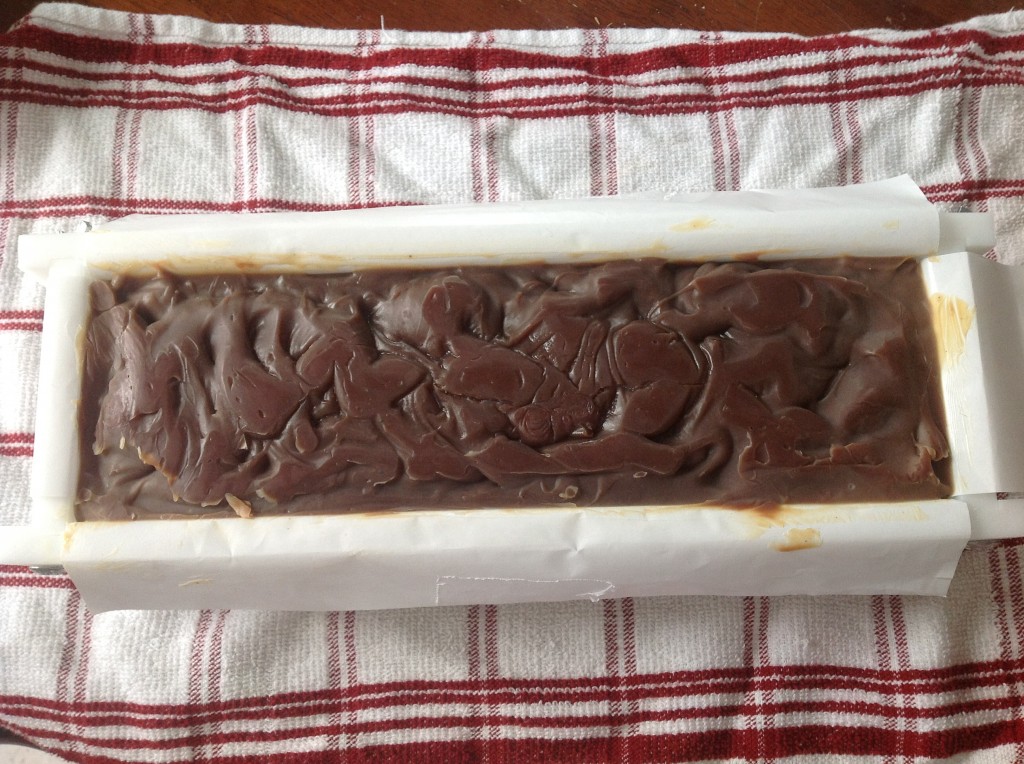
When I cut it into bars, I noticed that there was a sort of dark brown rim around the bar, while the middle was lighter. I think it was due to the fact that the soap isn’t completely hardened yet.
 A few hours later, the color had darkened to a deeper brown.
A few hours later, the color had darkened to a deeper brown.
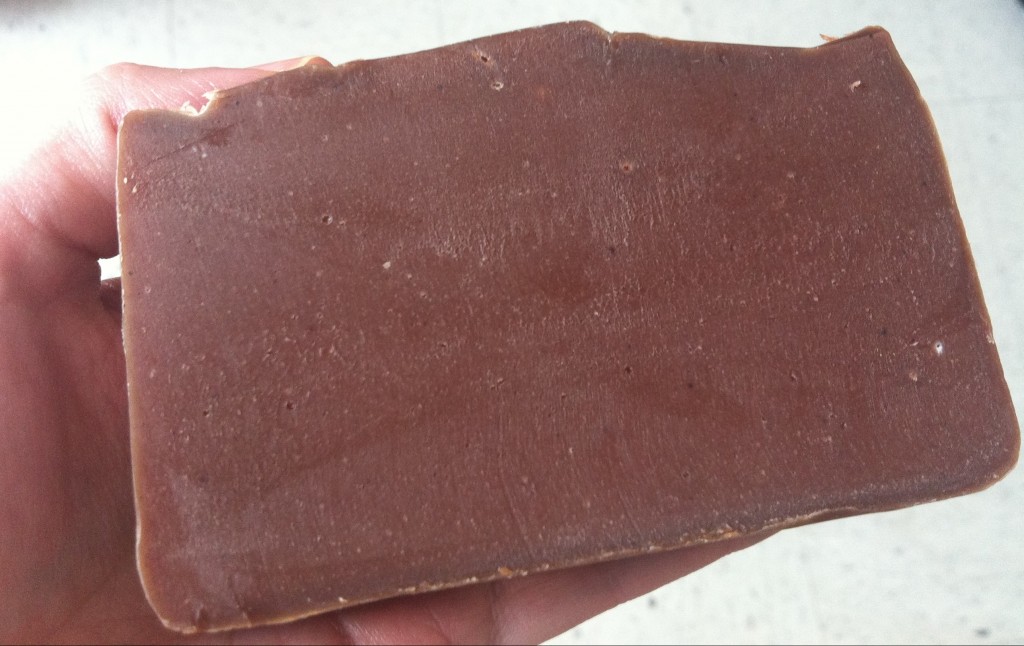 I noticed a couple of air bubbles, too, but you know, it’s chocolate milk, and who doesn’t blow bubbles in their chocolate milk, right?
I noticed a couple of air bubbles, too, but you know, it’s chocolate milk, and who doesn’t blow bubbles in their chocolate milk, right?
It has a light scent that reminds me more of chocolate cake than milk, but my husband thought it smelled like chocolate milk. I lathered up and washed my hands with a tiny ball of the soap I had made from some trimmings, and it has a nice creamy lather. I was worried the chocolate would discolor the lather, but it didn’t seem to. I will have to test it again after some time passes just to make sure.
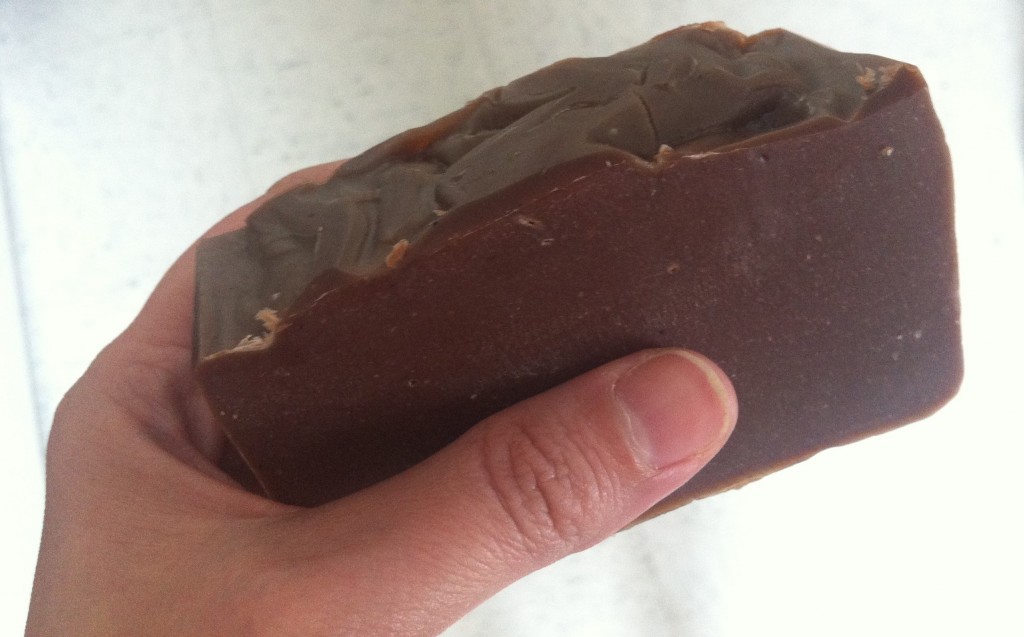
Chocolate Milk Soap by Dana Huff is licensed under a Creative Commons Attribution-NonCommercial 3.0 Unported License.
Permissions beyond the scope of this license may be available at Suds Life: About.
Lemongrass Sage Soap
This weekend I made a lemongrass sage soap using my own recipe.
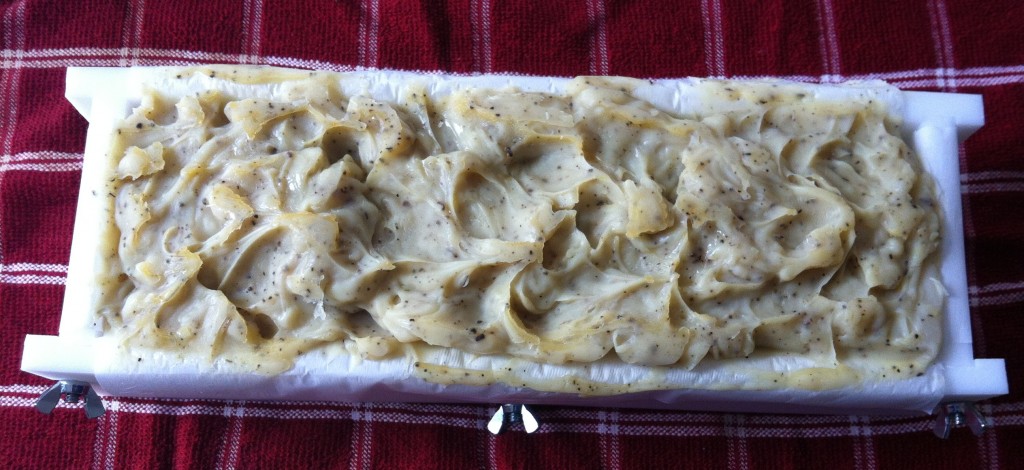
Ingredients
- 18 oz. olive oil
- 14 oz. coconut oil
- 8 oz. palm oil
- 5 oz. shea butter
- 2 oz. castor oil
- 15.7 oz. distilled water
- 7 oz. lye
- 2 oz. lemongrass essential oil (add at trace)
- 3 T sage (add at trace).
I tried a trick I read about in Heidi Corley Barto’s The Natural Soap Chef and infused some of the olive oil with sage prior to using it. I’m not sure I’m going to do that again because I had a lot of trouble straining it. I know part of the problem was that I was just impatient, but unless it imparts some quality I don’t know about to do it like that, it was a little more trouble than it was worth for me. I did mix the sage into a paste with the olive oil. I’m not sure if you have to do that, or what happens if you don’t. I suppose you could experiment and just mix it into the soap dry to see what happens.
I had a pretty heavy trace when I added the lemongrass oil, and it really made the soap thicken up. I would recommend adding it at a lighter trace. The soap was a little difficult to pour into my mold, and you might have better luck if you add the lemongrass oil earlier than I did. I added in sage at the same time.
When I poured the soap into the mold, I decided at the last minute to try adding some decorative peaks and swirls, as I have seen other soapers do. My daughter Maggie said the resulting soap looked “deformed.” That really made me laugh.
My husband has been saying the soap smells good enough to eat, and here he was laughing about the warnings in soap books about not eating the soap.
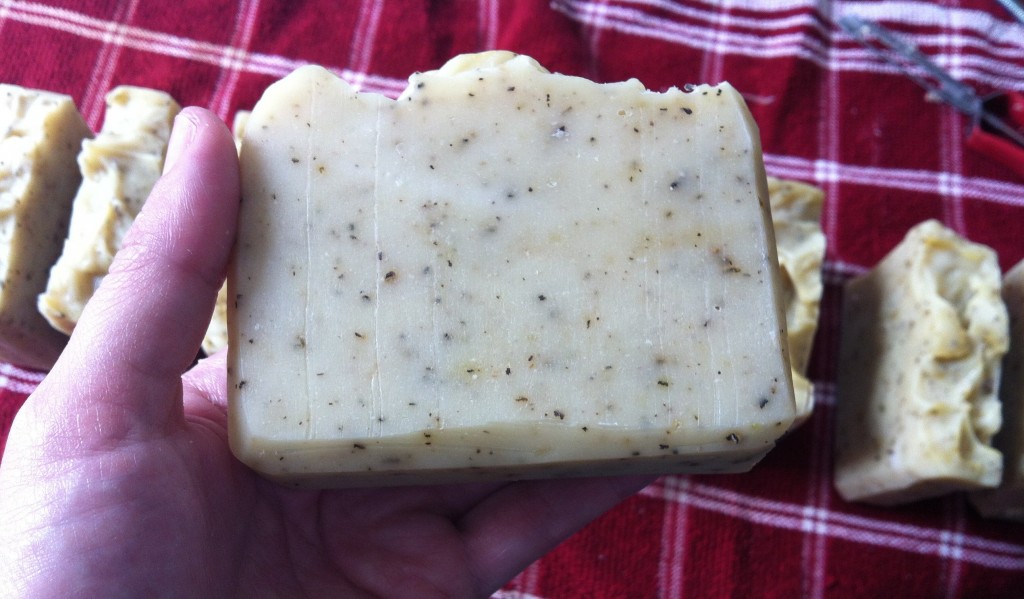
I think I could have stirred the lemongrass oil in a little better. There were some lighter colored areas in the soap, and they were not lye pockets or air bubbles. They are not watery, either, so I don’t think it’s an issue with separation. They are the same color the soap would be if the lemongrass oil hadn’t added a yellowish tint. I think I just didn’t mix the lemongrass and sage completely. Given that I did have some trouble at that stage, I think I understand how it happened and how to prevent it in my next batch. Also, I discovered that lemongrass oil doesn’t like to mix well with soap, so it seems likely that I just didn’t stir it enough. It was getting so thick so fast after I added the essential oil, however, that I was afraid to wait too long to pour it into the mold. Next time, I will add the oil at a lighter trace. Or I might even try a fragrance oil instead of an essential oil. The fun is in experimenting and seeing what happens! However, I should mention that lemongrass oil is supposed to be good for acne and oily skin, so that’s one reason to go for the essential oil over the fragrance oil.
The soap still came out pretty enough that several of my Facebook friends who saw the picture of it that I posted requested some. Also, I have decided I like making soap enough to open an Etsy store, especially because 1) I should recoup some of the money I’m putting into it, and 2) if I make soap every weekend, I’m going to have too much, even if I give it away. But given that I have only been soaping three weeks, it will likely be months before I have enough stock to sell.
I ordered a crinkle cutter from Bramble Berry for my next batch of soap. I’m so looking forward to making the Chai Tea Soap in Heidi Corley Barto’s book. The recipe is not mine to share, but I will photograph the results.
I used my husband’s old shoe rack and created a soap curing rack in one of our closets.
It’s out of the draft and light (when the door is shut, and I’m not checking on my soap). I had the idea after seeing this amazing soap curing cabinet that another soaper’s husband made for her.
Lemongrass Sage Soap by Dana Huff is licensed under a Creative Commons Attribution-NonCommercial 3.0 Unported License. Permissions beyond the scope of this license may be available at Suds Life: About.
Honey Cinnamon Oatmeal Soap
This was my first personal recipe, and the soap turned out great!
Ingredients
- 19 oz. olive oil
- 14 oz. coconut oil
- 6 oz. palm oil
- 5 oz. shea butter
- 2 oz. grapeseed oil
- 2 oz. castor oil
- 1.35 oz. sweet orange essential oil
- 0.7 oz. cinnamon bark essential oil
- 3 T finely ground oats
- 1 T honey
- 16 oz. distilled water
- 7.2 oz. lye
First, I lay bubble wrap in the bottom of my mold so the soap would have a honeycomb appearance on the bottom. I wish I had lined the mold with parchment paper, too. Despite the fact that my mold’s manufacturer said lining was unnecessary, it was terrible trying to remove the soap from the mold. I had to pop it in the freezer for an hour, and even after that, I had to wedge it out with a knife, which kind of made my soap less pretty. Lesson learned. Always line!
I didn’t want to fiddle with the essential oils and oats when my soap was tracing, so I went ahead and measured them first, then combined them into one container and set them aside. I ground my oats with a coffee grinder, put them in another container, and set them aside. Then I went ahead an measured out the tablespoon of honey and set it aside, too.
I poured 16 oz. water into a container, set it aside, and carefully measured 7.2 oz. of lye into a new container. Then I slowly added the lye to the water, stirring all the while. I kept stirring until the liquid was clear. Then I stuck my thermometer into the lye so I could watch the temperature.
I know there are different schools of thought on warming oils. It was hot here in Massachusetts yesterday, so my coconut oil was already melted, but if it hadn’t been, I’d have melted it in the microwave. I did melt the shea butter in the microwave. Sue me. Despite the fact that I did not take care to make sure the oils were the same temperature as the lye, the soap turned out well.
I measured out my oils into different containers, then combined them into one big plastic bowl and kept stirring. A note for beginners like me: use a scale to measure everything. Don’t try to use a measuring cup and do it by volume. You could be a little off that way. I was a little worried that my shea butter was starting to solidify again while I waited for the lye to reach 100°F. I could see little tiny solid pieces, miniscule really, but I prayed and kept stirring. For all I know, that’s not a bad thing. I’m a newbie.
Once the lye reached 100°F, I carefully added it to the oil mixture and stirred for a few moments. Then I used my stick blender to speed up the process. At a light trace, I added the honey. I guess I should have diluted the honey. My finished soap had some brown spots.
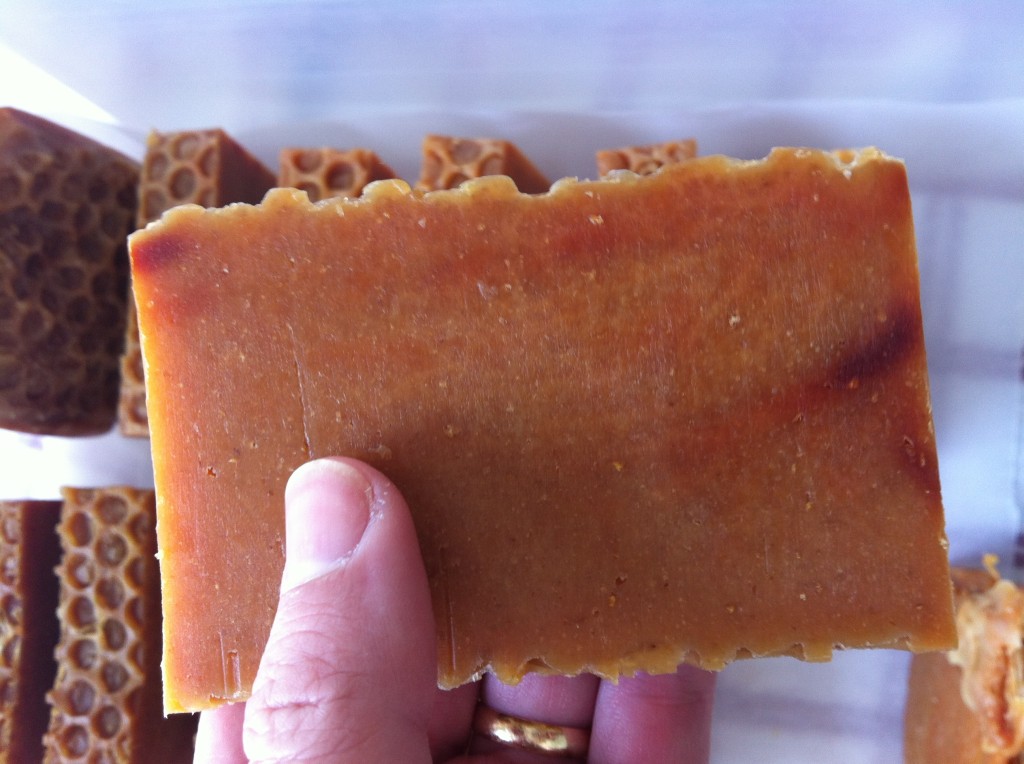
According to one online troubleshooter (dead link removed—sorry!), this can also happen when your soap goes through a very hot gel phase. Like mine did.
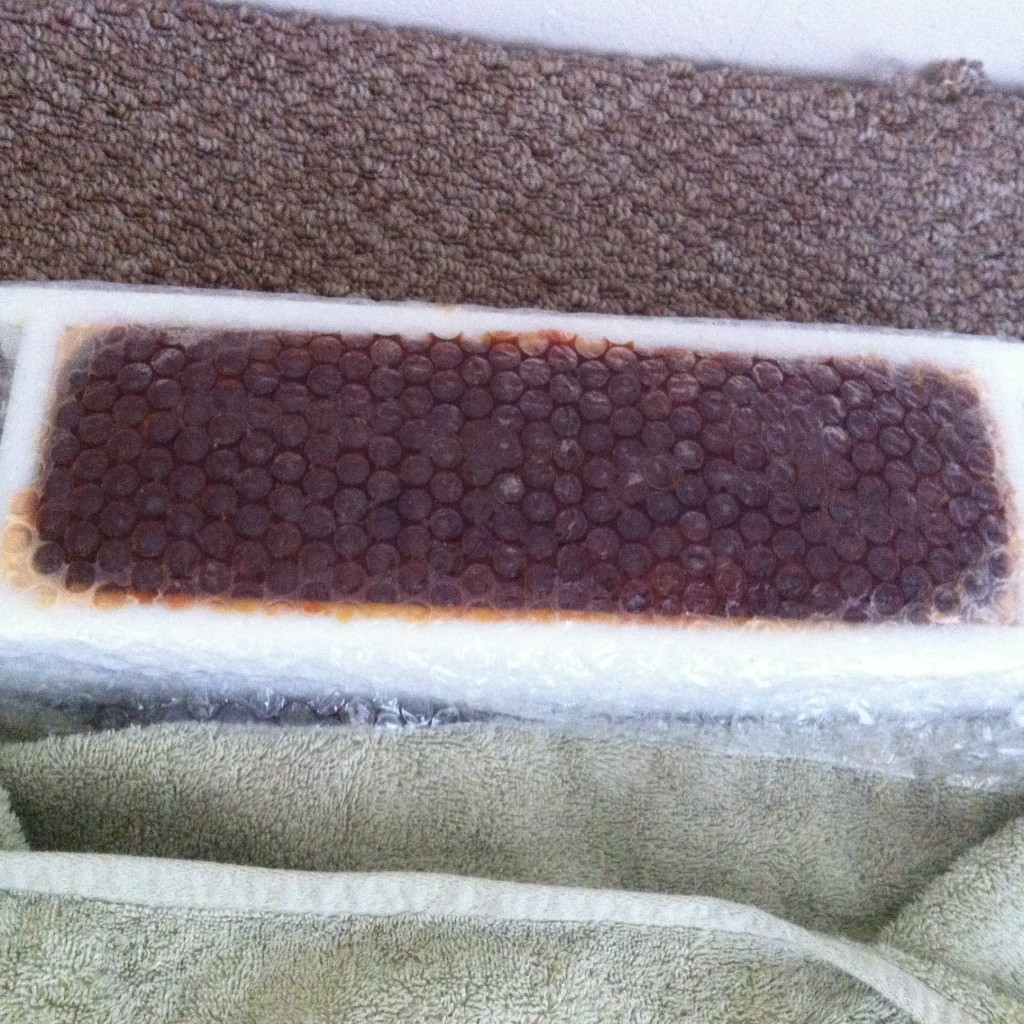
I had read that honey does funny things. Perhaps I didn’t need to cover the soap with a towel. However, I did read that the dark spots might go away once the soap is cured, and also that the soap is still fine to use. Whew! I think they sort of give it character.
At trace, I added the essential oils and ground oats and stirred thoroughly to mix everything in well. I covered the top with bubble wrap for the honeycomb effect, then put my soap to bed.
I actually made a mistake in my recipe. I added 20 oz. of olive oil instead of 19. I’m not sure what it did to my batch, aside from make more soap. I’ll have to wait and see if there were any unintended effects, but the soap looks just fine.
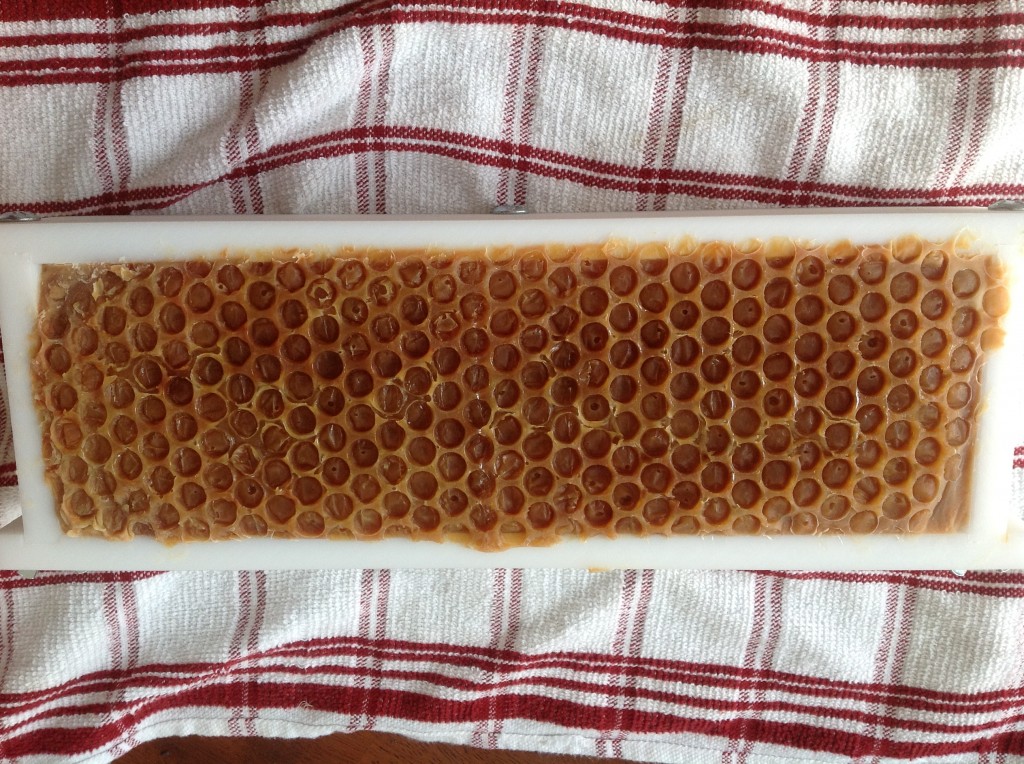
I have a mold that comes with a cutter, so once I finally wrestled my soap out of the mold, I sliced it into bars. They’re kind of quirky and not all the same size.
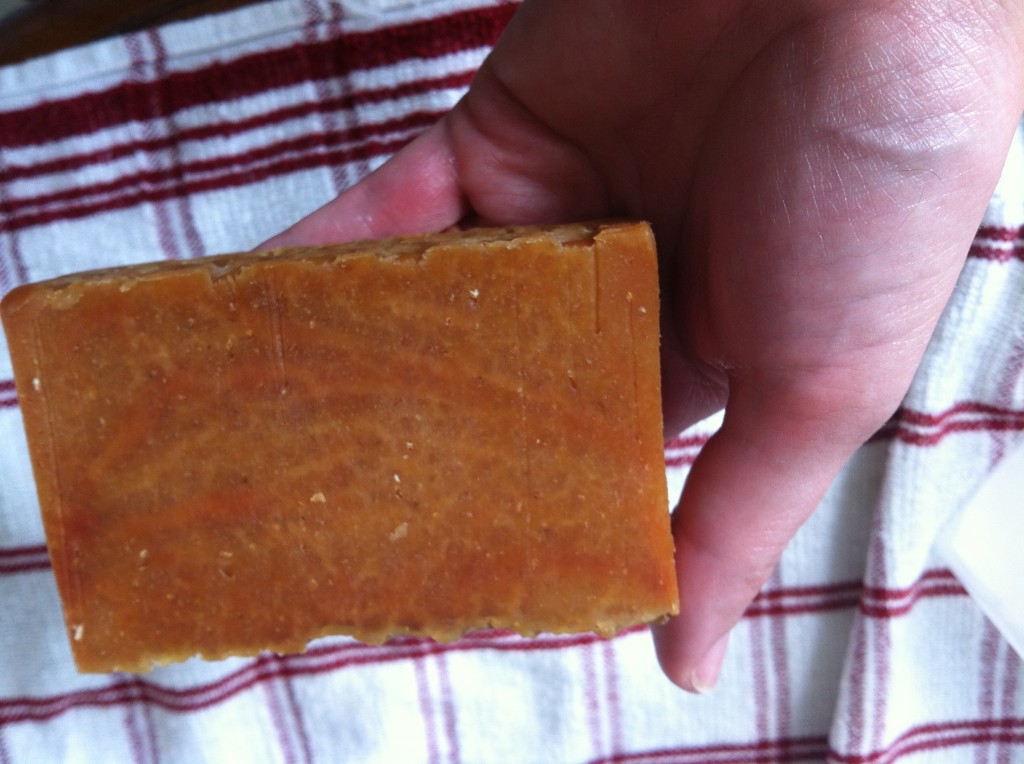
But like I said, I learned my lesson about the lining, which should prevent some of the odd looking bars next next time.
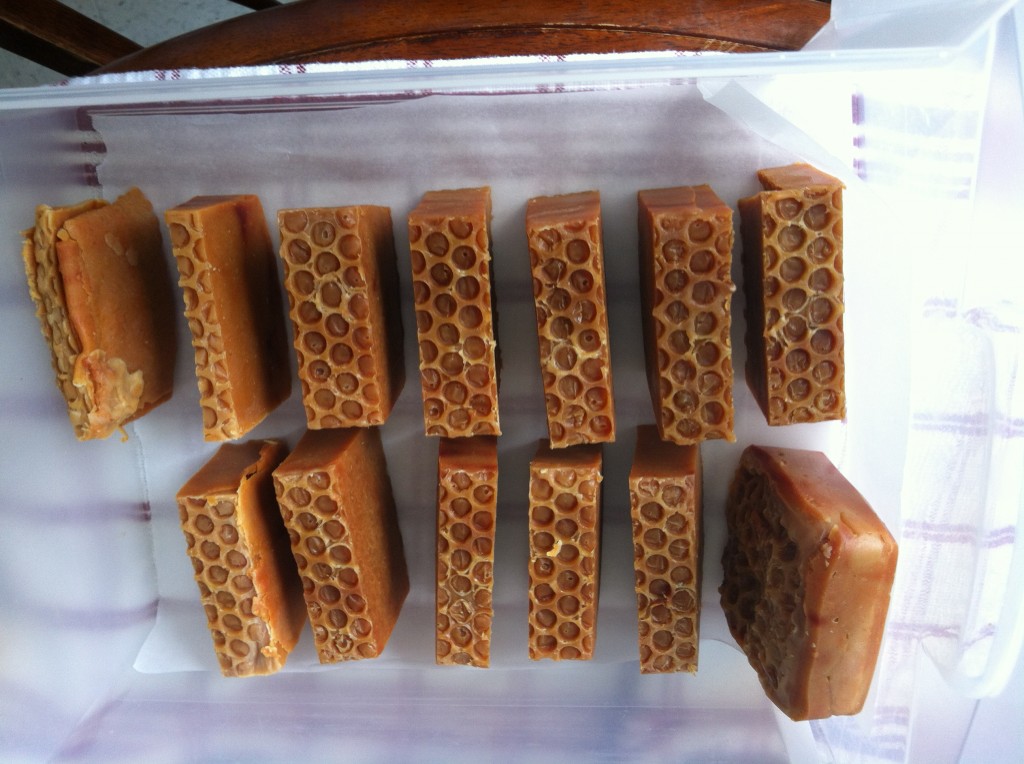
You’re probably wondering about that huge bar of soap on the far right. Right? It may be the result of adding the extra ounce of olive oil, or it could be that I’m a newbie and can’t figure out how much oil will make the exact right amount to fit my mold, but I had that much soap left over after my mold was full, so I poured into a plastic container, and put bubble wrap on it, too.
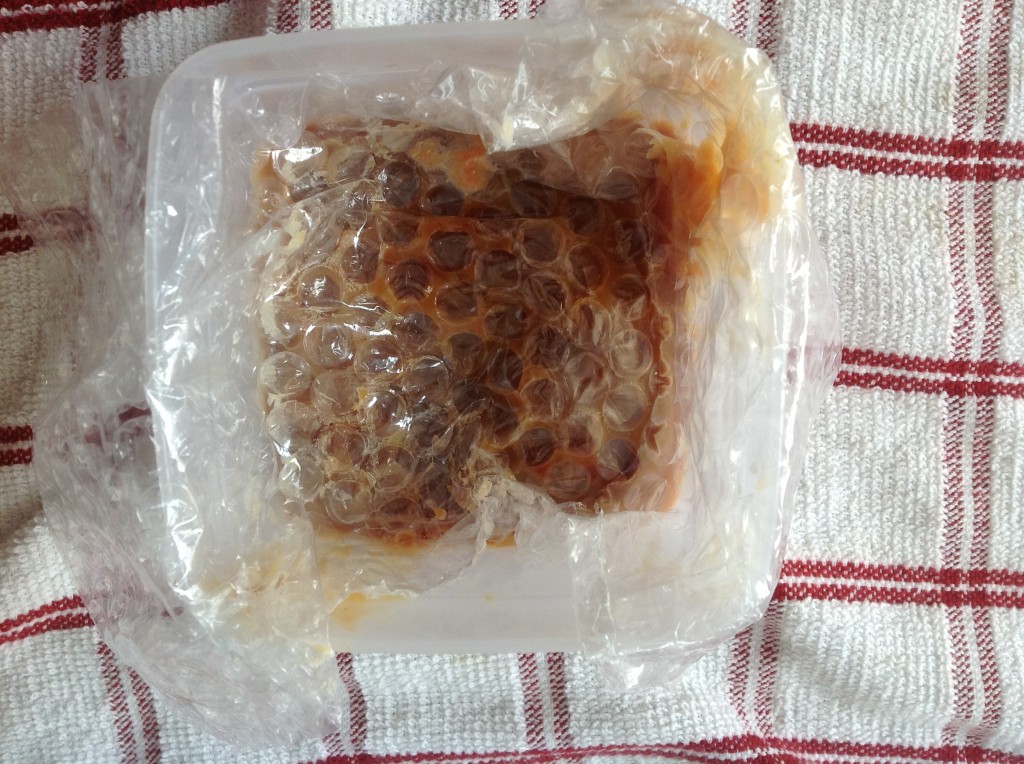
And it came out pretty well.
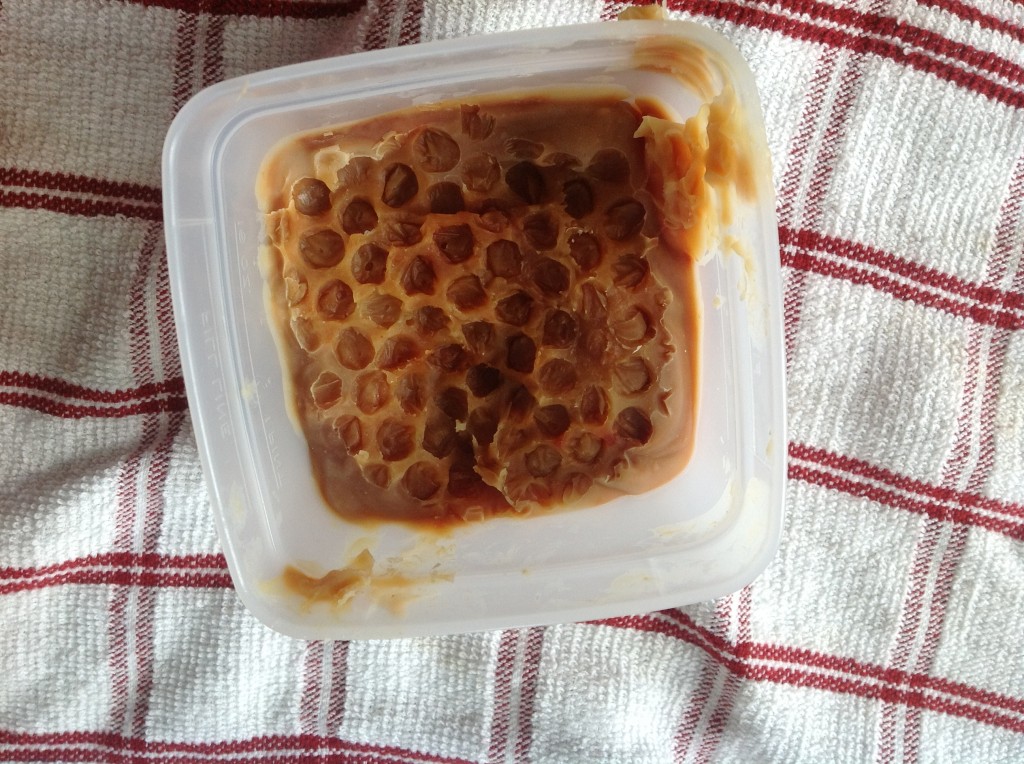
It was a little easier to get out of the mold, but it still gave up a little fight. I used a peeler to make it look a little nicer around the edges.
That is one huge bar of soap.
Still the honeycomb effect turned out well.
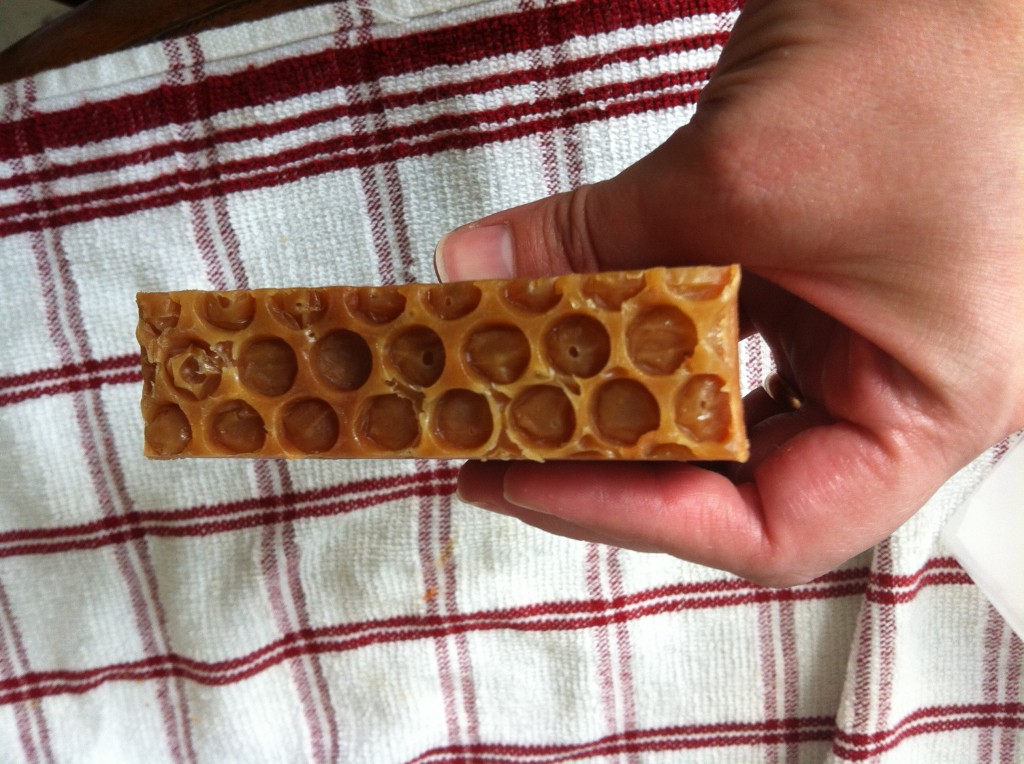
Overall, I’m very pleased with how the finished soap looks, despite the brown spots. I was working with honey, which can be kind of cranky, and I was using a recipe of my own, so who knew what would happen? It smells absolutely divine, by the way. The combination of the honey and essential oils is amazing.
By the way, this soap had an INS value of 155, which is close to Dr. Bob’s ideal of 160. So that’s good? I guess. Also, the calculator I used to create the recipe predicts the recipe will produce soap with a medium hard bar, very good cleansing, great conditioning, good foam, and average stable lather. I wasn’t sure whether to worry about lather stability over much or not.
Washing up my supplies told me that the soap lathers up really well and feels good on my hands. I can’t wait to use it.
Honey Cinnamon Oatmeal Soap by Dana Huff is licensed under a Creative Commons Attribution-NonCommercial 3.0 Unported License. Permissions beyond the scope of this license may be available at Suds Life: About.

